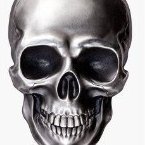Tomei 2.8 Stroker
Announcements
-
Similar Content
-
Latest Posts
-
I've got the rear ones, they're certainly beefy. I need to take them to my driveshaft guru to check over, he's very fussy about the quality of components so I'll let you know if they are made of cheese by a blind man. Are you in Australia? A mate just had a set of EN26 shafts made for his K20 Lotus by our fabricator which were quite cheap (compared to Driveshaft Shop) so if you can procure the CV's and draw what you need he'd make them for ~$800 for the pair.
-
Had I known the diff between R32 and R33 suspension I would have R33 suspension. That ship has sailed so I'm doing my best to replicate a drop spindle without spending $4k on a Billet one.
-
OEM suspension starts to bind as soon as the car gets away from stock height. I locked in the caster and camber before cutting off the kingpin. I then let the upright down in a natural (unbound) state before re-attaching it. Now it moves freely in bump and droop relative to the new ride height. My plan is to add GKTech arms before the car is finished so I can dial camber and caster further. It will be fine. This isn't rocket science. Caster looks good, camber is good, upper arm doesn't cause crazy gain and it is now closer to the stock angle and bump steer checks out. Send it.
-
Pay careful attention to the kinematics of that upper arm. The bloody things don't work properly even on a normal stock height R32. Nissan really screwed the pooch on that one. The fixes have included changing the hole locations on the bracket to change the angle of the inner pivot (which was fairly successful but usually makes it impossible to install or remove the arm without unbolting the bracket from the tower, which sucks) and various swivelling upper arm designs. ALL the swivelling upper arm designs that look like a capital I (with serifs) suck. All of them. Some of them are in fact terribly unsafe. Even the best one of them (the old UAS design) shat itself in short order on my car. The only upper arm that works as advertised and is pretty safe is the GKTech one. But it is high maintenance on a street car. I'm guessing that a 600HP car as (stupidly, IMO) low as you are going is not going to be a regular driver. So the maintenance issues on suspension parts are probably not going to be a problem. But you really must make sure that however your fairly drastically modded suspension ends up, that the upper arms swing through an arc that wants to keep the inner and outer bolts parallel. If the outer end travels through an arc that makes that end's bolt want to skew away from parallel with the inner bolt, you will build up enormous binding and compressing forces in the bushes, chew them out and hate life. The suspension compliance can actually be dominated by the bush binding, not the spring rate! It may be the case that even something like the GKTech arm won't work if your suspension kinematics become too weird, courtesy of all the cut and shut going on. Although you at least say there's no binding now, so maybe you're OK. Seeing as you're in the build phase, you could consider using R33/4 type upper arms (either that actual arm, OEM or aftermarket) or any similar wishbone designed to suit your available space, so alleviate the silliness of the R32 design. Then you can locate your inner pivots to provide the correct kinematics (camber gain on compression, etc).
-
The frontend wouldn't go low enough because the coilover was max low and the upper control arm would collapse into itself and potentially bottom out in the strut tower. I made a brace and cut off the kingpin and then moved the upright down 1.25" and welded. i still have to finish but this gives an idea. Now I can have a normal 3.25" of shock travel and things aren't binding. I'm also dropping the lower arm and tie rod 1.25".
-





Recommended Posts
Create an account or sign in to comment
You need to be a member in order to leave a comment
Create an account
Sign up for a new account in our community. It's easy!
Register a new accountSign in
Already have an account? Sign in here.
Sign In Now